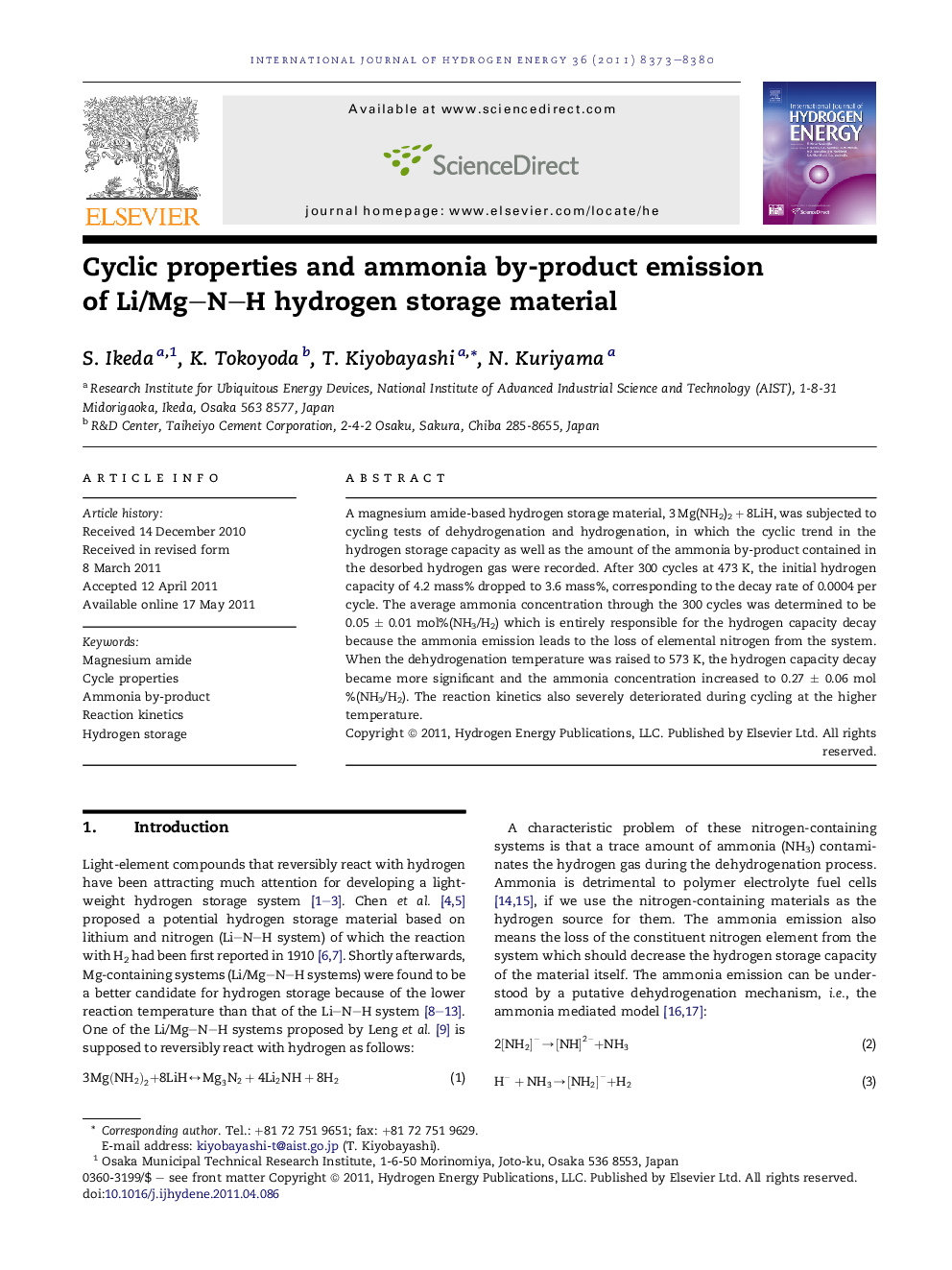| Article ID | Journal | Published Year | Pages | File Type |
|---|---|---|---|---|
| 1279152 | International Journal of Hydrogen Energy | 2011 | 8 Pages |
A magnesium amide-based hydrogen storage material, 3 Mg(NH2)2 + 8LiH, was subjected to cycling tests of dehydrogenation and hydrogenation, in which the cyclic trend in the hydrogen storage capacity as well as the amount of the ammonia by-product contained in the desorbed hydrogen gas were recorded. After 300 cycles at 473 K, the initial hydrogen capacity of 4.2 mass% dropped to 3.6 mass%, corresponding to the decay rate of 0.0004 per cycle. The average ammonia concentration through the 300 cycles was determined to be 0.05 ± 0.01 mol%(NH3/H2) which is entirely responsible for the hydrogen capacity decay because the ammonia emission leads to the loss of elemental nitrogen from the system. When the dehydrogenation temperature was raised to 573 K, the hydrogen capacity decay became more significant and the ammonia concentration increased to 0.27 ± 0.06 mol%(NH3/H2). The reaction kinetics also severely deteriorated during cycling at the higher temperature.
► 300 cycles test at 473 K of Li/Mg–N–H hydrogen storage material. ► 500 ppm of NH3 contamination was observed in desorbed H2 throughout the cycles. ► Raising the temperature to 573 K increased NH3 contamination to 2700 ppm ► High temperature also severely damaged the kinetics.
